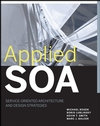Many companies are considering a Business Architecture (BA) initiative as part of their corporate strategy. While researching and analyzing the BA, they are rediscovering Michael Porter’s value chain. Many find this reawakening quite logical, while some may get confused between the terms; value chains and value streams. This article will provide an explanation and synthesis of these remarkable and enlightening concepts. First, I will clarify and define the basic terms so that I can explain their architectural relationships.























